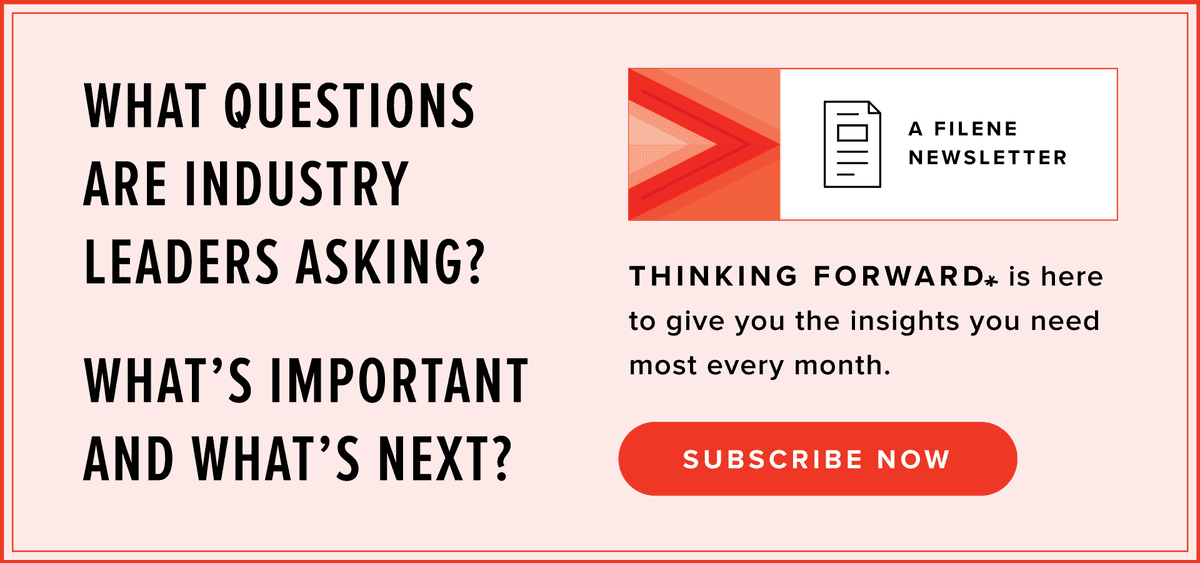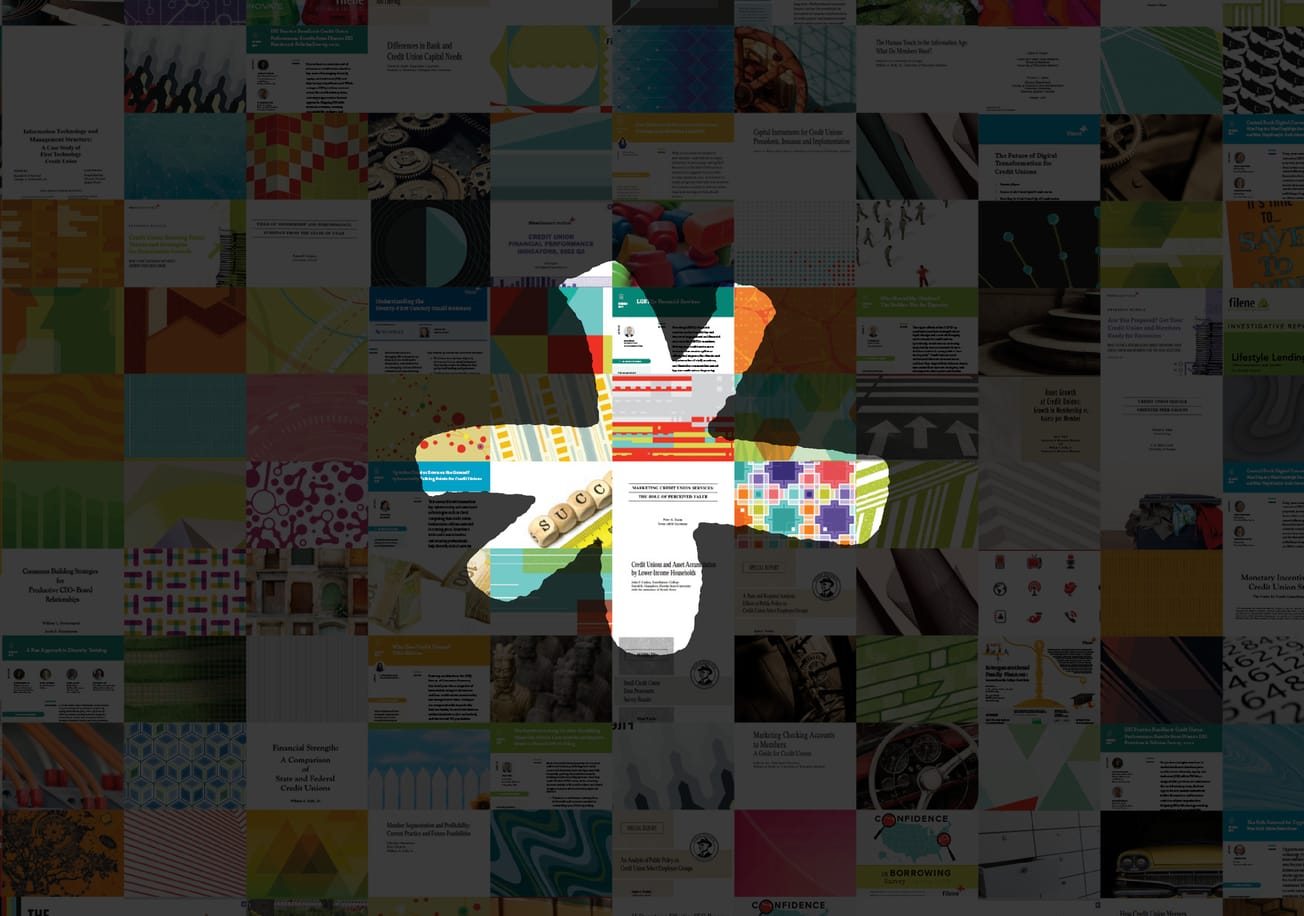Each year, SXSW (South by Southwest) brings together innovators and thought leaders from across the globe, with its interactive conference spotlighting emerging trends at the intersections of technology, business, design, and social impact. While many think of SXSW as a film and music festival, its tech conference has become a powerful barometer for what’s next.
This year, a central theme emerged: the evolving relationship between technology and human connection. Sessions on AI, fintech, sustainability, and the future of work explored both opportunities and challenges—especially as AI transforms industries and the workplace, cryptocurrency continues to evolve, and digital experiences redefine how people interact. Throughout the conference, leaders focused on how to embrace innovation while maintaining authentic human connections, navigate AI adoption responsibly, and shape the future of financial services through technology.
Keep reading to discover McKaye's key takeaways for credit unions from this year’s event.
Putting AI to Work
Key Insights
AI dominated SXSW 2025, with speakers emphasizing its transformative potential across industries—from art and entertainment to financial services and workplace collaboration. We’re in the midst of a new industrial revolution, and organizations that successfully integrate AI will be best positioned for the future.
- According to Atlassian’s State of Teams 2025 Report, Fortune 500 knowledge workers waste 25% of their workweeks searching for information—adding up to 2.4 billion hours annually.
- 98% of executives worry that their teams aren’t effectively leveraging AI to eliminate silos.
- Organizations that successfully unlock their collective knowledge are 4.6 times more likely to meet deadlines and 5.4 times more likely to produce high-quality work.
Annie Dean, Atlassian’s Global Lead of Team Anywhere, emphasized that AI can only work with digital information—making the shift to online workflows a necessary step for AI adoption. However, organizations face a critical challenge: embracing AI tools means navigating data security risks. Do they engage and risk proprietary data exposure, or hold back and risk falling behind?
Emerging Solutions
- Polygraf AI, winner of the SXSW 2025 Pitch Competition, offers an agentic AI data loss prevention (DLP) infrastructure, allowing organizations to adopt AI without compromising security.
- Smaller, specialized AI models are gaining traction. Niall Firth, Executive Editor at MIT Technology Review, pointed out that bigger isn’t always better. Instead of massive, multipurpose AI models, smaller models trained on highly specific data are proving more efficient, secure, and resource-conscious.
Opportunities for Credit Unions
- Leveraging AI for Member Service: Small language AI models show promise for enhancing member interactions with personalized, trustworthy, and secure responses. Credit unions should consider which use cases will be the best fit for these technologies.
- Operational Efficiency: AI-powered tools can streamline internal processes, improve decision-making, and enhance fraud detection, but information must be accessible for these models to work. Information security and data structuring efforts remain important to prepare for upcoming AI transformations.
Resources
- Report: Atlassian 2025 State of Teams‚—Study of 12,000 knowledge workers and 200 executives on AI, teamwork, and information access.
- Session: MIT Technology Review’s 10 Breakthrough Technologies of 2025—AI-focused content begins at 13:30.
The Human Touch: No Replacement for Connection
Key Insights
As AI and automation continue advancing, the importance of human connection is more critical than ever. Kasley Killam, a leading expert in social health, highlighted the direct link between social well-being and overall health. Meanwhile, emerging technologies, such as those created in MIT’s Media Lab focusing on Social Robotics, present new ways to facilitate and enhance meaningful connections rather than replace them.
Why it Matters
- 20% of adults worldwide report having no one they can turn to for help.
- The U.S. Surgeon General declared loneliness and isolation an epidemic in 2023.
- Stronger relationships lead to better immune responses, cognitive functioning, and even professional success—employees with a best friend at work are seven times more engaged.
Opportunities for Credit Unions
- Building Community: Credit unions have always been about relationships. In an era of social disconnection, they can strengthen loyalty and impact by fostering meaningful connections both in-person and digitally.
- For Employees: Prioritizing social health drives retention, innovation, and productivity. Credit unions should embed the “people helping people” ethos into workplace culture by fostering collaboration, well-being, and purpose-driven work.
- Leveraging Technology: From AI-powered member engagement to social robotics, there are many emerging approaches to enhancing interaction. Credit unions should think critically about opportunities to use these new solutions to strengthen, rather than replace, human connection.
Resources
- SXSW Session Recording: The Missing Key to Living Longer, Healthier, and Happier– Kasley Killam highlights the impact of social health on overall well-being.
- MIT Project: Creativity with Social Robots—Explores whether social robots can help children think more creatively.
Crypto: Scam, Government Surveillance, or a Lifeline for the Underbanked?
Key Insights
Crypto remains a hotly debated topic, with SXSW discussions highlighting both its risks and its potential.
Regulatory Risks
- Limited Regulation: Without consumer protective regulations in place, crypto markets remain prone to speculation and fraud. Molly White, author of [Citation Needed], warned about consumer vulnerability, pointing to the millions of dollars lost to memecoin speculation and fraud cases like Celsius founder Alex Mashinsky as examples of how poorly regulated spaces can harm investors.
- Central Bank Digital Currencies (CBDCs): Conversely, too much government involvement, especially in the form of CBDCs, raises concerns about financial privacy. Experts like Nick Anthony (Human Rights Foundation), Charlene Fadirepo (Mango Digital Strategies), and Roger Huang (Forbes Contributor) have warned that the widespread adoption of CBDCs, with over 127 governments planning to launch them, could lead to intrusive government surveillance by collecting extensive financial data.
Crypto’s Potential Benefits
- While the above concerns were shared, leaders also communicated that if properly regulated, crypto could provide unique benefits to individuals without access to traditional banking—particularly in inflationary or unstable economies—a way to engage in financial transactions, transfer money internationally, and gain access to more stable forms of currency, such as stablecoins.
- Crypto also offers a unique opportunity for financial inclusion through bypassing the need for identification or minimum requirements imposed by traditional financial institutions.
Opportunities for Credit Unions
- With 28% of American adults now owning cryptocurrency, credit unions have a unique opportunity to assess their approach to financial education and future product strategies, including the rise of emerging stablecoin developments.
Resources
- CBDC Dashboard: Human Rights Foundation’s Central Bank Digital Currency Tracker (CBDC Tracker | Executive Summary)
- Fund: Human Rights Foundation’s Bitcoin Development Fund—dedicated to supporting Bitcoin and related freedom technologies more powerful tools for human rights defenders operating in challenging political environments.
Things to Watch
While these areas are continuing to evolve, SXSW 2025 offered a glimpse into the near future, with many conversations pointing to innovations at the intersection of AI, finance, and human experience:
- Agentic AI: The next wave of AI will take actions based on user prompts, rather than passively generating responses. (See: Future Today Strategic Group’s 2025 Trend Report on Artificial Intelligence)
- Quantum Computing: Still years from broad applications, quantum technology will enable new kinds of computing, revolutionizing scientific discovery, financial market modeling, and cybersecurity. (See: Fireside Chat by Charina Chou, COO for Google Quantum AI: Quantum Computing — the What, Why, and When)
- Robotics: Experts predict that real-world data will be essential for artificial general intelligence (AGI), with robotics playing a key role. New web protocols are being designed for special standards to support this development (Learn more about HSTP and HSPL).
Bottom Line: Innovating for the Future
Amy Webb, CEO of Future Today Strategic Group, put it best: “What’s bleeding-edge today might be old news…later today.” As technology and consumer expectations evolve rapidly, credit unions must remain proactive in shaping the future.
But innovation isn’t just about technology—it’s about people. As Kasley Killam and others pointed out, connection isn’t just a personal necessity; it’s a strategic advantage. Credit unions have long been built on the power of relationships, and this strength is more critical than ever in today’s digital world.
That’s the basis of our work at FiLab—to help credit unions navigate what’s next, together. Through collaboration, research, and real-world testing, we’re working to ensure that credit unions don’t just adapt to change—they lead it. We’re excited to continue exploring these insights with our FiLab community as we build a stronger, more connected future for financial services.
— MB















